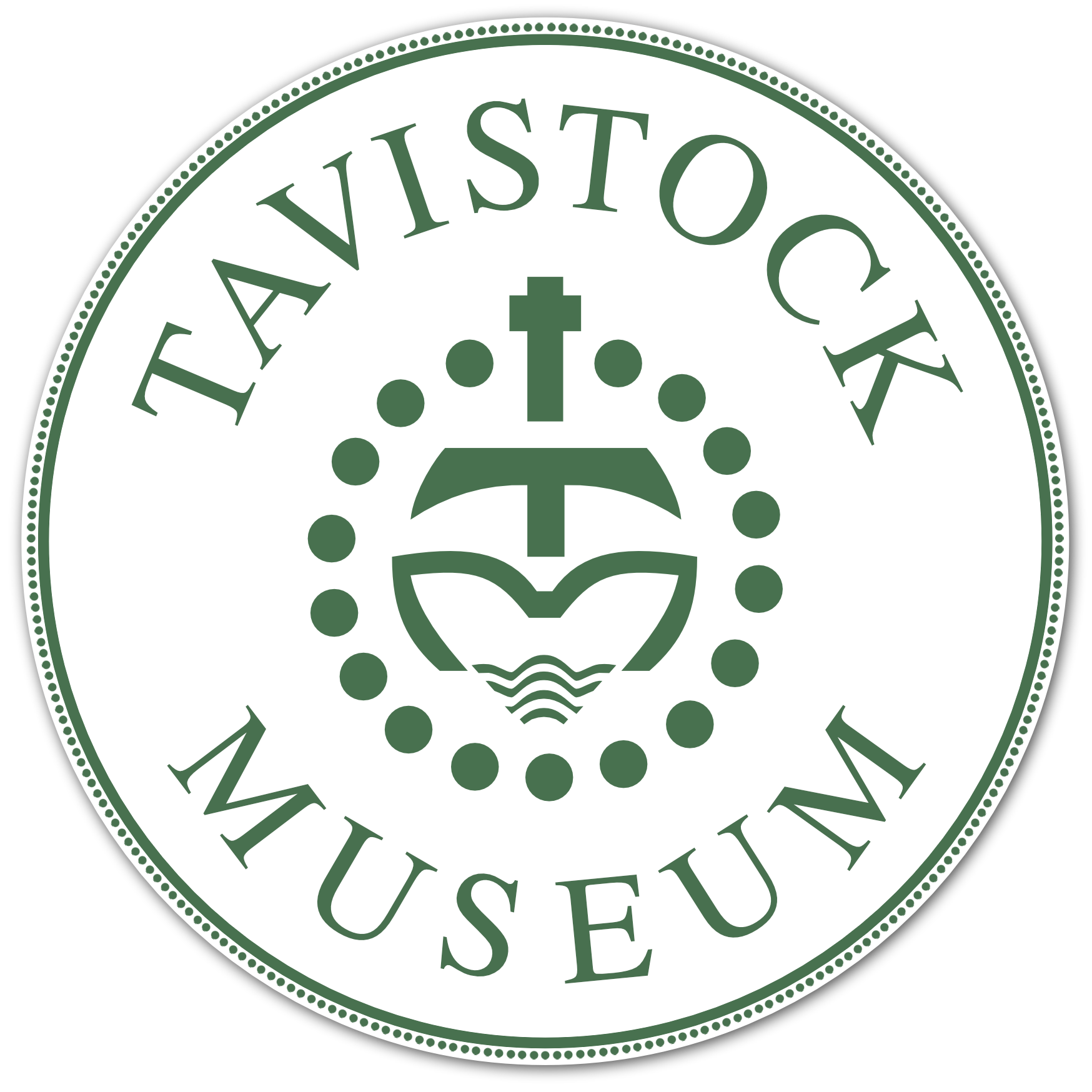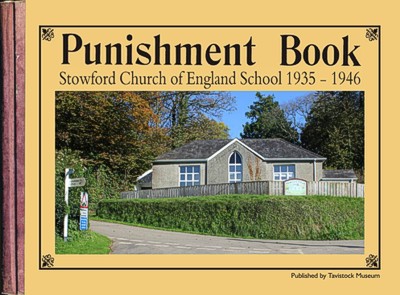Of all the exhibits in Tavistock Museum the one which attracts the most interest is the School Punishment Book from Stowford Church of England School, a small village school, near Lifton. The book was completed for the period February 1935 until November 1946 and records the names and misdeeds of 105 pupils between the ages of 6 and 14. As so many visitors have asked for a copy of the book the museum decided to publish it and now has copies available for sale from the museum shop and on the Devon Museums website.
From 1900 the Ministry of Education required that a Punishment Book was kept by schools in which ‘every case of corporal punishment inflicted in the School should be entered’. Corporal punishment was only stopped in state schools in 1987 so there are still many of us who can remember those good old days when teachers maintained discipline by punishing unruly, disrespectful or lazy pupils with strokes of the cane on the hands, legs or bottom. Fortunately, most victims can now shrug it off with the comment that ‘it did me no harm’, and of course, it always makes a good story, especially the time you were ‘whacked’ in school, and, back at home, got a ‘clout around the ear’ from your father for being in trouble at school.
Roderick Martin, manager of the museum, stated that he was pleased that the museum had decided to publish this excellent booklet since it was social history from within living memory, but of a time when attitudes were so very different. Many of our visitors are astonished at the severity and inconsistency of some of the punishments which, by today’s standards, were often for relatively trivial misdemeanours. Roger aged 6 received 4 strokes on each hand for swearing having been warned on three previous occasions, Daniel and Eric aged 11 each received 3 strokes on each hand for giggling, Annie aged 12 received a stroke on each hand for talking one minute after a warning, Peter aged 10 and Graham aged 11 each received two smacks on the seat for fighting with their exercise books, Francis aged 10 and Roger aged 13 each received 4 strokes across legs for bad behaviour in lavatories, Margaret aged 12 received three strokes on each hand for insolence and lying, and so on. The maximum number of strokes recorded was ten, administered to Peter aged 8, five on each hand, for carelessness after a warning.
The book shows that some pupils were frequently in trouble and their names kept re-appearing. Others have the same surname as previous offenders so were probably brothers or sisters keeping up the family tradition. Punishments were usually given after a verbal warning and in some cases several verbal warnings. A large number were for throwing objects. There were some occasions when groups of children were in trouble for throwing objects, resulting in a mass caning. Donald, Brian, Cedric, Norman, Roger and John aged 9-12 each received 3 strokes on each hand because they jumped over the school hedge into the road, threw stones and caused a horse with a wagon to bolt. Joan, Jean, Phyllis and Monica aged 8 to 12 each received 2 strokes on each hand for being late for school because they were throwing stones at a bird’s nest.
The head teacher who carried out the canings, and recorded them in the book, was Marjorie Allen. She joined the school in 1935 and left in 1947 to take up a post in the North of England. It is recorded in the Western Morning News of the 5th August 1947 that on the occasion of her leaving she was presented with a wallet containing notes in appreciation of her service. The school closed in July 1950 and its pupils were transferred to the Lifton County Primary School. The former school building is today the Stowford Parish Hall.
The book is available from the museum and our online shop.

